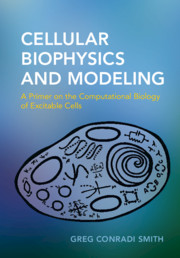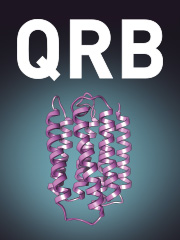Electric Brain Signals
It is common to study the electric activity of neurons by measuring the electric potential in the extracellular space of the brain. However, interpreting such measurements requires knowledge of the biophysics underlying the electric signals. Written by leading experts in the field, this volume presents the biophysical foundations of the signals as well as results from long-term research into biophysics-based forward-modeling of extracellular brain signals. This includes applications using the open-source simulation tool LFPy, developed and provided by the authors. Starting with the physical theory of electricity in the brain, this book explains how this theory is used to simulate neuronal activity and the resulting extracellular potentials. Example applications of the theory to model representations of real neural systems are included throughout, making this an invaluable resource for students and scientists who wish to understand the brain through analysis of electric brain signals, using biophysics-based modeling.
- Presents biophysical theory and computer code for modeling extracellular spikes, local field potentials, (LFPs), electrocorticographic (ECoG), electroencephalographic (EEG), and magnetoencephalographic (MEG) signals, with a focus on practical applications
- Gives neuroscientists a deeper understanding of the biophysics behind extracellular recordings helping to prevent misinterpretations
- Illustrates the link between theory and real recorded signals under various conditions
- The computer code used in many of the simulations presented in this book can be downloaded and modified, helping scientists to address specific research questions
Reviews & endorsements
'Electric Brain Signals, by the Norwegian group founded by Gaute Einevoll, is the definitive how-to guide for detailed, biophysical modeling of brains, building up from the minuscule ionic currents traversing the cellular membrane, to the observed macro-variables across spatial scales, from the extracellular action potential and local field potential to EEG and MEG signals recorded inside or outside the skull. The book beautifully encapsulates, with easy-to-read prose and associated code, the sophistication of quantitative, mechanistic neuroscience of the twenty-first century necessary to understand the brain and the mind at the time scale of sensory input, motor action, and thought, in both health and disease.' Christof Koch, Allen Institute for Brain Science, USA; and author of Biophysics of Computation
'If you love physics, are fascinated with the brain, and wish that neural circuits could be understood from first principles, this book is for you! Gaute Einevoll and his team put together a masterpiece educational resource. Depending on the background and stage of training, the reader can consume it front to back, or use it as a reference book. The first part covers, in detail, the biophysical theory governing generation of the transmembrane and extracellular electrical potential. The second part is a comprehensive guide to simulations of these signals with the focus on data-driven modeling, from the microscopic level of single neurons and neural networks to macroscopic signals observable with noninvasive electro- and magneto-encephalography. This didactic organization, depth of coverage, and impeccable expertise of the authors make this book a top candidate as a textbook for computational neuroscience courses. Supplementary simulation software, freely available on GitHub, is a fantastic addition for research and teaching.' Anna Devor, Boston University, USA
'The brain is an electrochemical organ. The laws of electricity are simple. Yet how currents spread in a heterogeneous, non-isotropic milieu, such as the brain, is super complex. This long needed outstanding book provides all the necessary ingredients to comprehend this complexity. Done with the utmost care, this volume is a must-read for both novices and experts in electrophysiology and I bet it will become the foundation of elective graduate courses for many years to come. The text is the systems neuroscience equivalent of the single-neuron Hodgkin–Huxley model.' György Buzsáki, NYU Neuroscience Institute, USA; and author of Rhythms of the Brain and The Brain from Inside Out
'This book is a fantastic resource for the computational neuroscience community and beyond. The introductory 'guide' is outstanding in its clarity and description for readers with a range of backgrounds. The presentation is rigorous and detailed with many mathematical equations, and yet readable and understandable, with many figures. The authors are to be commended for their clearly defined terminologies and presentation of complex concepts. A gem of a read for anyone wanting to develop an in-depth understanding of electrical brain recordings and models of them.' Frances K. Skinner, Krembil Brain Institute, University Health Network and University of Toronto, Toronto, Ontario, Canada
Product details
June 2024Paperback
9781009018623
400 pages
243 × 168 × 21 mm
0.7kg
Not yet published - available from February 2025
Table of Contents
- Preface
- Abbreviations
- Reserved physical symbols and quantities
- 1. Introduction
- 2. Charges, currents, fields and potentials in the brain
- 3. Neural dynamics
- 4. Volume-conductor theory
- 5. Conductivity of brain tissue
- 6. Schemes for computing extracellular potentials
- 7. Spikes
- 8. Local Field Potentials (LFPs)
- 9. Electroencephalography (EEG)
- 10. Electrocorticography (ECoG)
- 11. Magnetoencephalography (MEG)
- 12. Diffusion potentials in brain tissue
- 13. Final comments and outlook
- Appendix A frequency-dependent length constant
- Appendix B derivation of the current-dipole approximation
- Appendix C electric stimulation
- Appendix D derivation of point-source equation for anisotropic medium
- Appendix E statistical measures
- Appendix F fourier-based analyses
- Appendix G derivation of formulas for population signals
- Appendix H equations for computing magnetic fields
- Appendix I derivation of the MC+ED scheme
- References
- Index.





